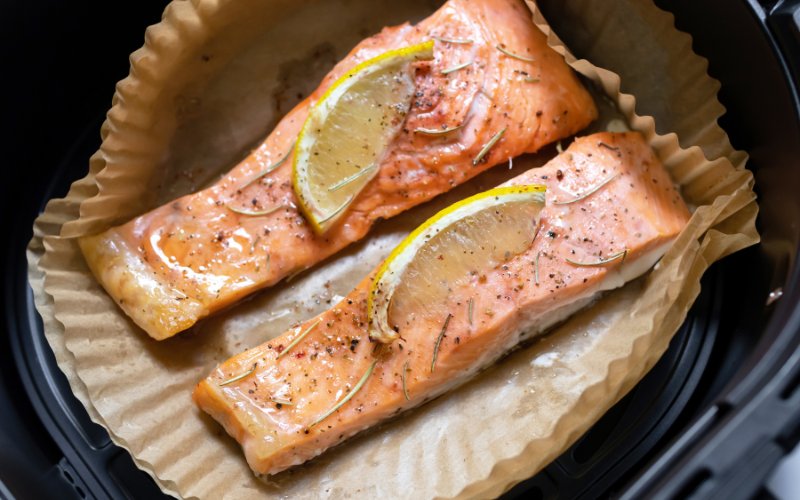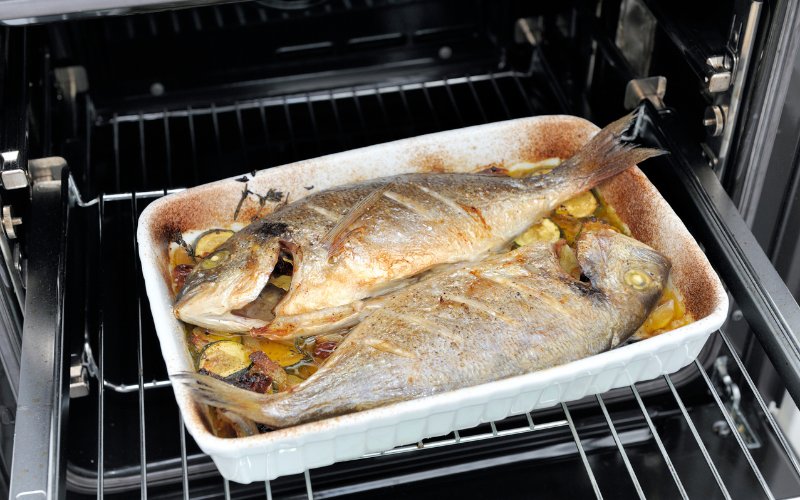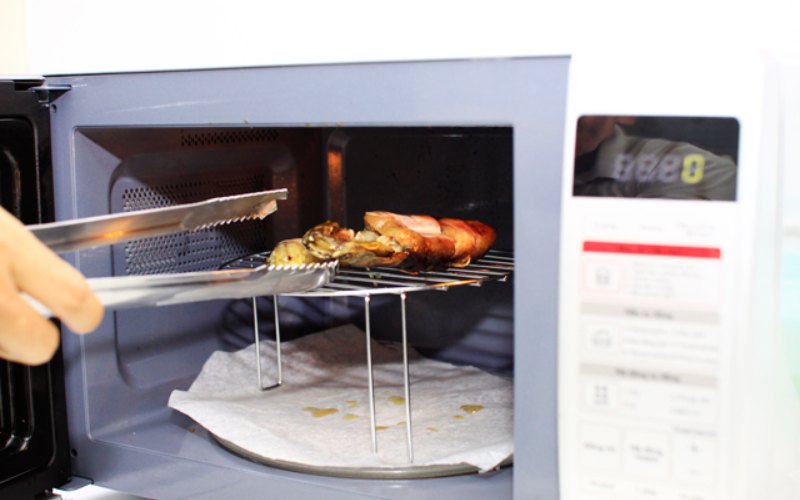Grilled fish is a favorite dish for many due to its delicious taste, low fat content, and rich nutrition. The best way to grill fish is using charcoal, but if that’s not available, what are the best alternatives? Let’s explore the pros and cons of using an air fryer, oven, or microwave to grill fish.
1 Grilling Fish with an Air Fryer
Advantages of Grilling Fish with an Air Fryer
Air fryers are becoming the “queen” of modern kitchens due to their convenience, multifunctionality, and health benefits. Grilling fish with an air fryer offers the following advantages:
Quick and Convenient: With just a few simple steps, you can enjoy delicious grilled fish without spending too much time or effort. Air fryers eliminate the need for constant monitoring and flipping, allowing you to multitask while cooking.
Economical: Air fryers use a minimal amount of oil, reducing the intake of calories and saving costs for your family.
Healthier Option: Air frying significantly reduces the formation of harmful substances compared to traditional frying methods, ensuring a healthier option for you and your family.
Tasty and Nutritious: The hot air circulation technology ensures even cooking, preserving the natural sweetness and nutrients of the fish. Air-fried fish has an appealing golden color and a mouthwatering aroma.
Easy Temperature Control: The adjustable temperature feature lets you choose the right heat setting for different types of fish, ensuring even cooking without burning.
Time-saving: Air frying fish typically takes only 25-30 minutes, which is much faster than traditional grilling methods.

Advantages of Grilling Fish with an Air Fryer
Disadvantages of Grilling Fish with an Air Fryer
High Internal Temperature: Due to its enclosed design, the temperature inside the air fryer can get very high. When opening the lid to flip the fish, be cautious as the hot air and sparks can cause burns. Always use appropriate protective tools.

Disadvantages of Grilling Fish with an Air Fryer
2 Grilling Fish with an Oven
Advantages of Grilling Fish with an Oven
Ovens are the ideal companion for those who love grilled fish. Compared to other cooking methods, grilling fish in an oven offers several benefits:
Convenient and Time-saving: With just a few simple steps, you can marinate the fish with spices and place it in the oven. The oven will take care of the rest, leaving you free to attend to other tasks.
Suitable for Large Fish: Ovens have spacious interiors, allowing you to grill whole fish easily while preserving its attractive appearance and flavor.
Perfect Results: Ovens offer a variety of grilling modes and adjustable temperature and time settings, ensuring the fish is cooked evenly and retains its tenderness and firmness.
Fast Grilling: Ovens have high power, significantly reducing the time required to grill fish. Depending on the type of fish, it usually takes only 5-10 minutes.

Advantages of Grilling Fish with an Oven
Disadvantages of Grilling Fish with an Oven
Sudden Temperature Change: Placing fish in a cold oven and then heating it up can cause the skin to peel, affecting the aesthetics of the dish.
Difficult Temperature Control: Choosing the right temperature for the size and weight of the fish is crucial. Too high a temperature can burn the fish, while too low a temperature can result in uneven cooking.
Dry Fish: Ovens tend to produce dry heat, which can make the fish lose moisture and become dry and crumbly.

Disadvantages of Grilling Fish with an Oven
3 Grilling Fish with a Microwave
Advantages of Grilling Fish with a Microwave
Microwaves offer a time-saving solution for grilling fish thanks to their high power and efficient heat generation. You can easily select the grilling mode and duration suitable for different types of fish, ensuring even cooking while preserving nutrients. The rotating plate in the microwave ensures even grilling on all sides, preventing burning or drying out. With these advantages, microwaves are your reliable assistant in preparing delicious and nutritious grilled fish quickly and conveniently.

Advantages of Grilling Fish with a Microwave
Disadvantages of Grilling Fish with a Microwave
Limited Grilling Capability: Microwaves are primarily designed for reheating and defrosting food, so their grilling performance may not be as effective. Large or whole fish may take a long time to cook and can become dry and less tasty.
Unsatisfactory Results: Microwaves cook food from the inside out using electromagnetic waves, which can lead to uneven cooking. The outer part of the fish may burn while the inside remains raw.
Loss of Aroma: The grilling process in a microwave can cause the fish to lose its distinctive aroma, making the dish less appealing.
Limited Cooking Options: Grilling fish in a microwave is usually suitable for simple dishes with light seasoning. More complex recipes with heavy spices, sauces, or salted chili may not yield desirable results.

Disadvantages of Grilling Fish with a Microwave
In conclusion, each method has its pros and cons. Consider your needs and preferences when choosing the best way to grill fish. Now, go ahead and impress your loved ones with delicious grilled fish prepared using the right equipment and techniques!


































